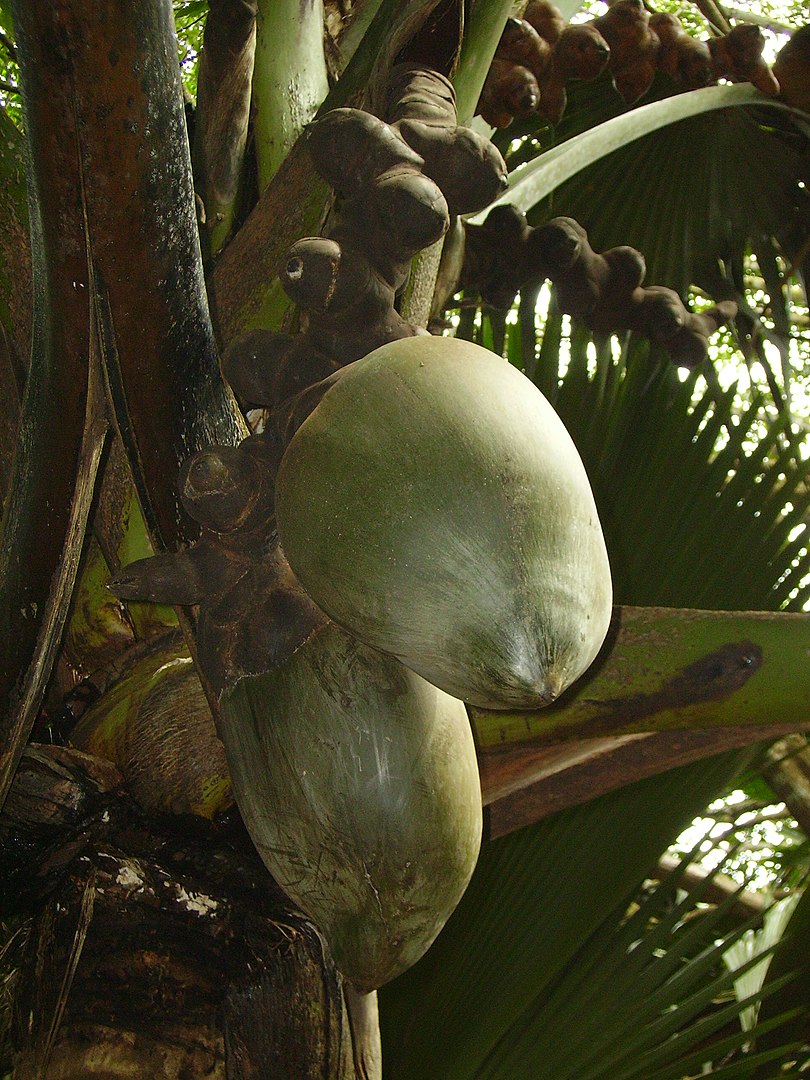A renowned palm tree known for producing the largest and heaviest seeds in the world thrives on the stunning islands of Seychelles in the Indian Ocean.

The seeds of the double coconut, also known as coco-de-mer, are highly distinctive in shape and weigh approximately 25kg (55 lbs), measuring up to half a meter long, harvested once every 10 years. The palm species responsible for these remarkable seeds is called Lodoicea maldivica, and it is the only member of its family endemic to the islands of Praslin and Curieuse in Seychelles. Previously, it could also be found on the small islets of St Pierre, Chauve-Souris, and Ile Ronde (Round Island), located near Praslin, but it had become extinct there until recently reintroduced.
According to legend, the double coconut possesses medicinal properties, although this claim remains unproven. Nevertheless, this palm tree continues to captivate due to its aesthetic marvel, with individual nuts currently fetching prices ranging from £500 to £2,000!

Unfortunately, like many other plants, the double coconut has suffered from overharvesting, and now there are only around 8,000 mature specimens remaining in the wild, confined to the two islands of Praslin and Curieuse. As a result, this species is listed as Endangered on the IUCN Red List of Threatened Species.

Not surprisingly, the seeds of this precious palm, both growing in the wild and in botanical gardens worldwide, are carefully guarded and sometimes even placed in cages to prevent poaching.
Some palm species closely related to the double coconut also produce some of the world’s largest seeds, although smaller than those of the double coconut, reaching up to 10cm in length.

Studying this incredible species could provide scientists with valuable insights into the evolutionary forces that drive plants to produce exceptionally large seeds. Hopefully, we will learn more about them in the near future!
